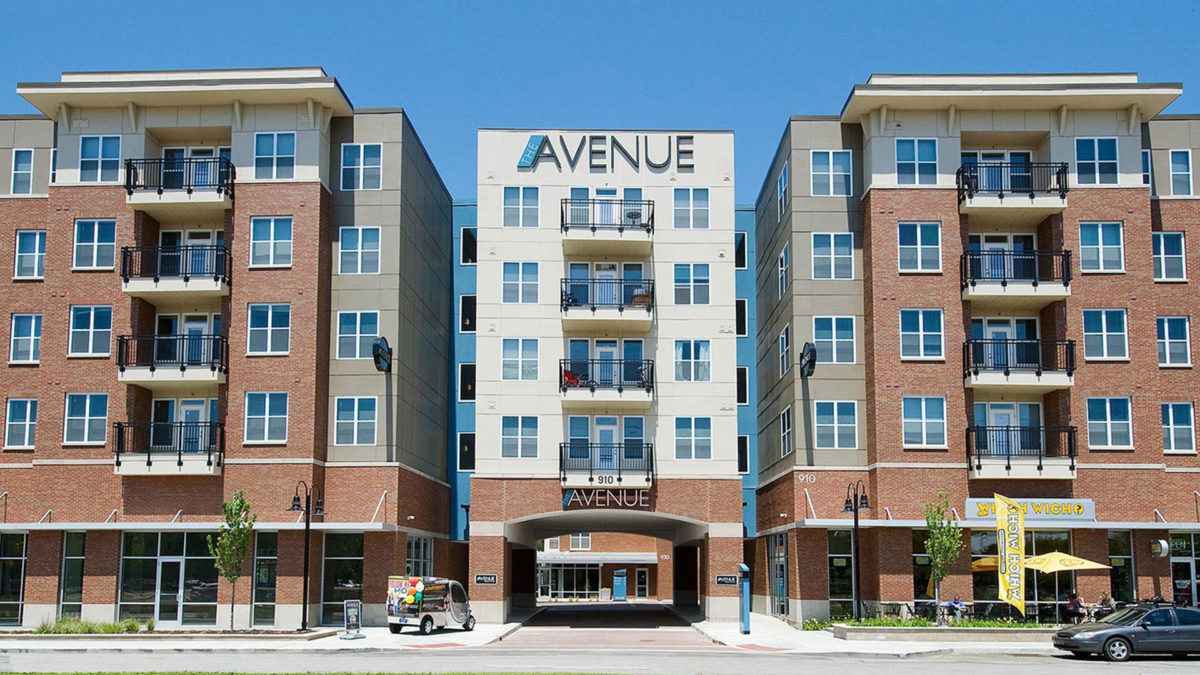
The design for the Avenue includes three structures on one site. The main building parallels 10th Street and includes 21,000 square feet of retail space on the first floor.
Apartment amenities and community features include modern apartments fully equipped with black, stainless-steel appliances, walk-in closets and spacious patios and balconies; a fitness center; a saltwater swimming pool with an outdoor kitchen and grill; Internet café, media room, and business center with several study areas.
This 4-story, 76 unit, wood frame apartment building has a concrete and steel podium structure constructed between two buildings. The second building is a 4-story, 48 unit, wood frame apartment building with slab on grade construction. The third building is a 4-story wood frame building consisting of approximately 3,500 square feet of amenity space on the first floor and 6 units (3 flats, 3 townhomes) constructed within the three stories above the amenity space. Additionally, the Avenue has a 3-story, 260 space, on-site parking garage.
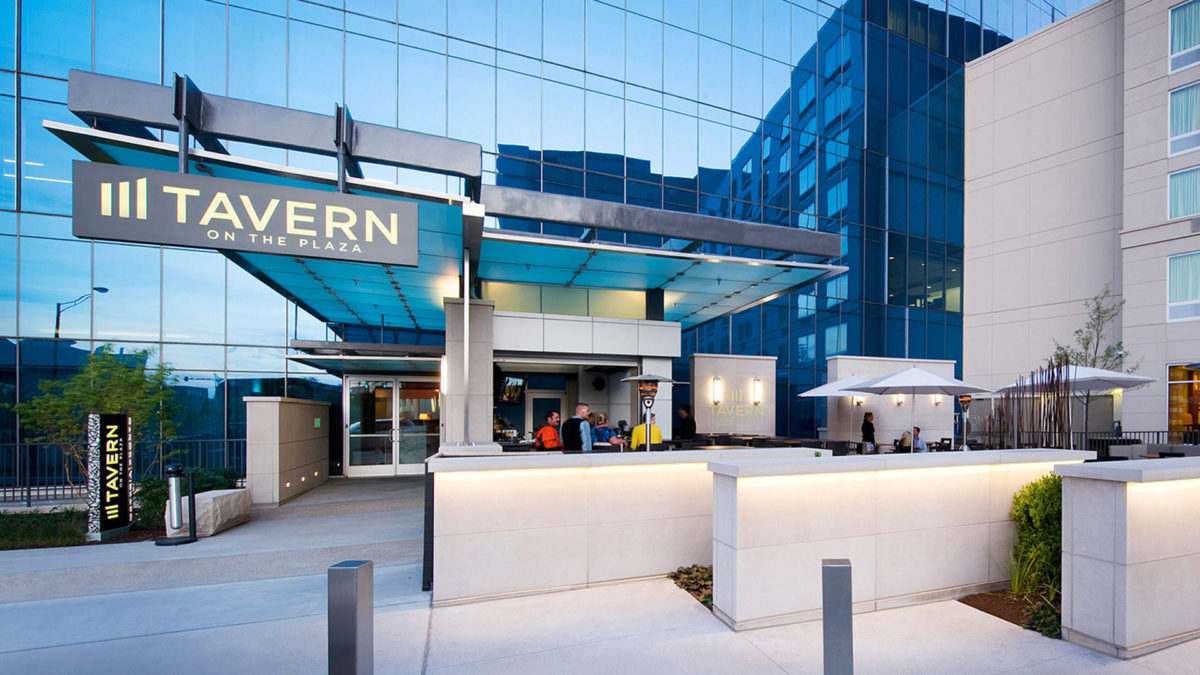
The JW Marriott, a 34-story hotel, boasts multiple dining venues including Osterio Pronto – a casual, yet upscale venue with authentic Italian cuisine, and High Velocity – a high-energy sports bar with an integrated entertainment concept. In addition, the Tavern on the Plaza, an extension of the Osterio Pronto space, provides an outdoor venue serving food from both restaurants.
Osterio Pronto is warm and inviting with wood floors, iron light fixtures, and soft colored furnishing.
High Velocity is an upscale sports bar with 50 TVs, chrome plated wall tiles, and state-of-the-art technology.
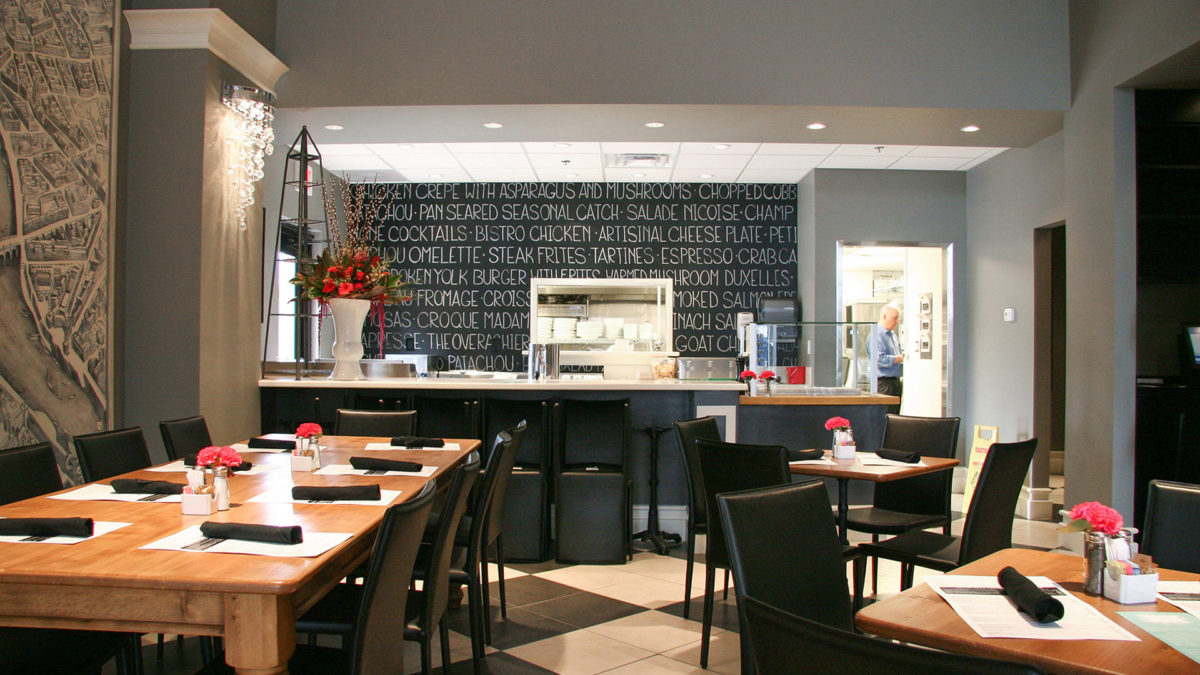
Dedicated to premium local ingredients within proven menu options, Café Patachou is recognized for exceptional casual dining for breakfast and lunch. The challenge initially was to find design solutions for the new downtown location in Simon Headquarters that did not lose the familiar neighborhood corner “Student Union” character of the beloved 49th Street original café yet speak to the downtown business and visitor patrons. The new image included a chalkboard wall with changing artist murals instead of the hanging works for sale of 49th street, finished ceilings with upscale lighting vs. exposed structure and minimal lighting, booth seating, large windows on the prominent street corner and separate area for special meetings. This collaboration continued for the Indianapolis International Airport location in Civic Plaza, a unique venue, still going strong more than 10 years later. As the locations and operations continued to explore new sites, the brand grew to add the Petite Chou concept, offering full day service including a dinner menu with a unique French Bistro focus in an outdoor mall location.
One of the most unique and fun sites was the new concept for the original 49th street café, which moved to a vacant corner suite and integrated a new Pizza concept evening venue, Napolese. The two restaurants share the kitchen, negotiating a grade change between the two tenant spaces. Napolese introduced a wood oven pizza brand with extensive wine and expanded beverage services. Significant operational efficiency was achieved by the shared kitchen solution.
CSO reviewed and enhanced layouts for the kitchens, storage, and front and back counter spaces, resulting in better workflow, faster delivery of finished dishes, and enhanced dining options.
Locations Include:
-
-
- Café Patachou, River Crossing
- Café Patachou, 49th St. and Pennsylvania
- Café Patachou, Simon Headquarters
- Napolese, 49th St. and Pennsylvania
- Petite Chou, Clay Terrace
- On the Fly, Indianapolis Airport
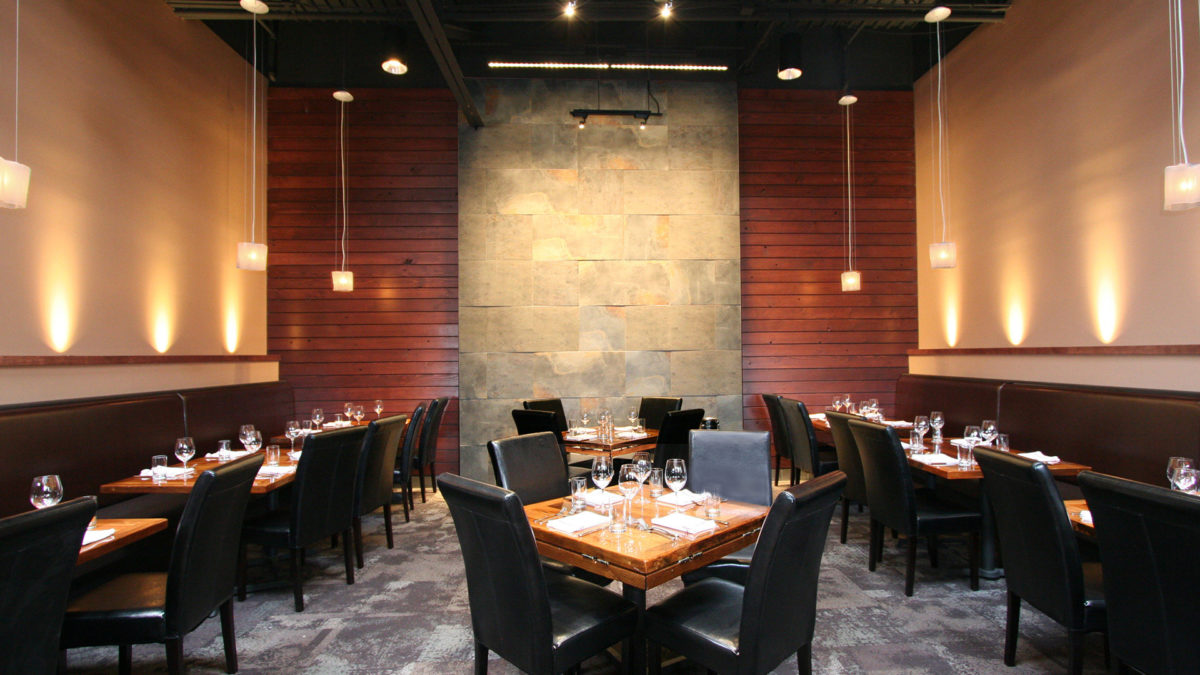
Late Harvest Kitchen combines the best elements of fine dining with the accessibility of a neighborhood restaurant. The restaurant’s design includes re-claimed wood and brick throughout to evoke a feeling of warmth and comfort. The dining room looks outward toward a spacious courtyard which features the most romantic dining space in Indianapolis. It is located in the Keystone at the Crossing area at The Shops at River Crossing. The overall context of Late Harvest Kitchen is that of quality and substance.
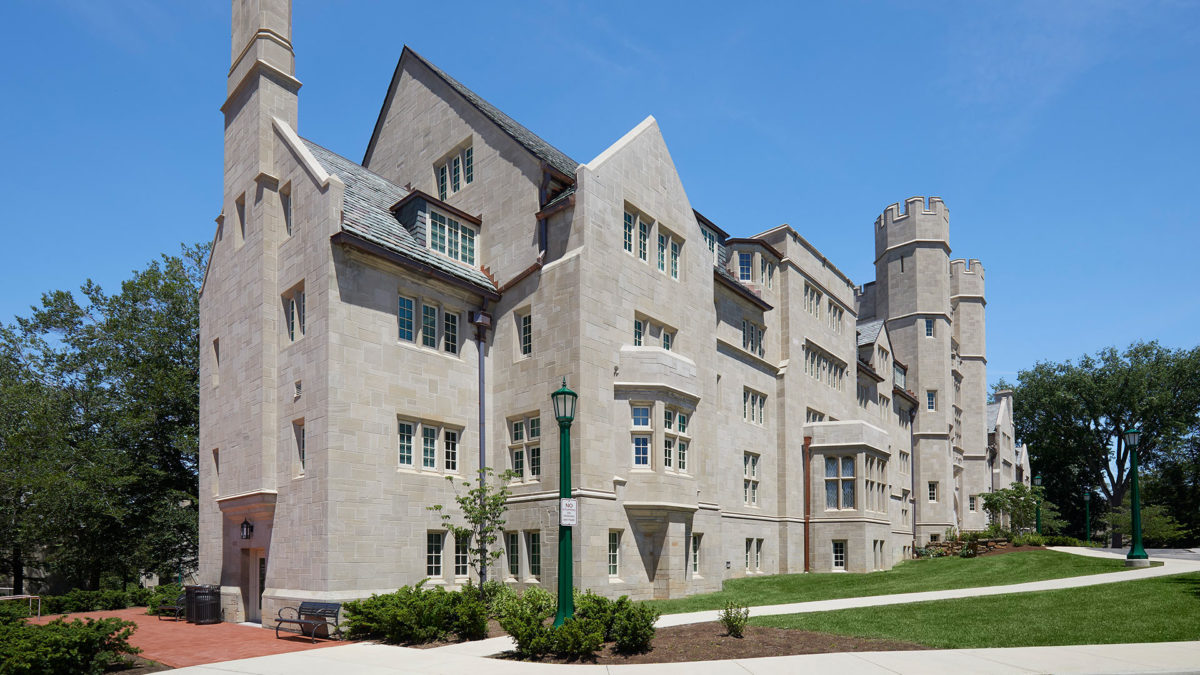
Wells Quadrangle is comprised of four buildings, including Memorial Hall and Goodbody Hall. The project involved repurposing both buildings from academic space to student housing. The University also wanted to determine the best location to accommodate a dining facility with an outdoor terrace. Originally, IU had targeted space in one of the other buildings in the quad, but a study led by CSO determined that an addition to Goodbody Hall would be the best solution to accommodate a 200-seat dining facility.
The design of the addition to Goodbody Hall required a solution that integrated seamlessly into the architectural character of Wells Quadrangle. The 1-story addition emerges from the base of the existing Goodbody Hall, and houses a dining area with open views toward the quad. A roof terrace above is accessed from both the exterior grade and the second level. This elevated terrace provides options for outdoor seating and a sweeping overlook to the quad.
The overall project required careful coordination to maximize usable space while accommodating updated MEP systems and the technology infrastructure demanded by today’s residence halls.
The renovation created accommodations for 174 students. The room configuration is comprised of a mix of 2-bedroom apartments, 2-bedrooms suites, single rooms, and double rooms. A variety of restroom configurations are available depending on the room type.
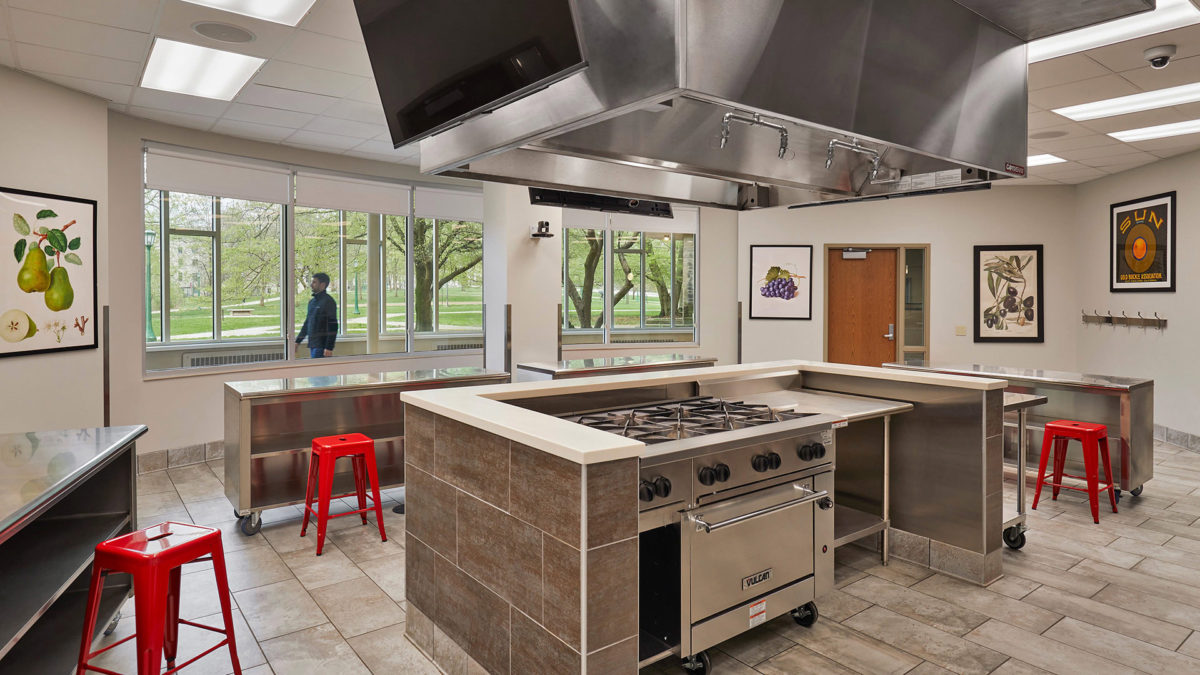
Beginning with experienced chefs and food service teams, the goal was to bring enhanced experiences including better meals, better catering options, and expanding course options to include learning home living skills, meal and food prep, and world food cultures. To support that goal, IU needed a new facility for catering that included cooking, baking, refrigeration and freezer storage, dishwashing, assembly and prep areas, and a full working kitchen.
Attached to the working kitchen, a student learning space with 5 team learning stations creates a classroom for approximately 20 to 25 students for demonstrations and hands on learning – similar to that found in a culinary program or school. All students can observe the work in the classroom, which is also equipped with video capabilities for recording and distance learning.
The design implementation challenges included the constraints of the space in a 1952 six-story residential dormitory building. Special skill was required to include seven exhaust hoods and make-up air equipment in an existing limited first floor space, with dormitory spaces above. The geometry of the available areas, a raised concrete floor area in the middle of the proposed kitchen, and the limits of the structural grid required a unique approach for the plan and equipment layouts. Through collaboration by team members and University staff, the project succeeded in meeting the working needs of the catering staff, despite the limits.





